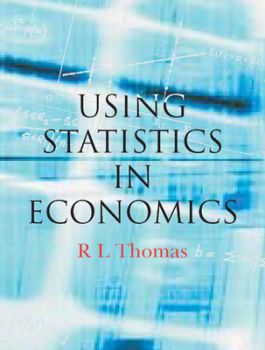Prerequisites
Part I Statistics
Chapter 1 – Discrete probability distributions
Chapter 2 – Continuous variables
Chapter 3 – Basic statistical inference
Chapter 4 – Hypothesis Testing 1
Chapter 5 – Hypothesis Testing 2
Chapter 6 – More about probability and inference
Chapter 7 – Chi-squared tests and nonparametric statistics
Part II Econometrics
Chapter 8 – What is econometrics?
Chapter 9 – Two variable correlation and regression
Chapter 10 – Introduction to non-linear regression
Chapter 11 – What makes a good estimator?
Chapter 12 – The classical regression model with two variables
Chapter 13 – An introduction to multiple regression
Chapter 14 – Models with qualitative effects
Chapter 15 – Some problems with the classical model
Chapter 16 - Introducing dynamic econometrics
Chapter 17 – A possible best-practice methodology
Solutions to examples
Index
The primary aim of this book is to provide a text for economics students which gives a good balance between statistics and econometrics.The intention is to prepare students for an introductory course in econometrics, while instilling a clear understanding of statistics. It is suitable for first or second year courses in Introductory Statistics or Introductory Statistics and Econometrics on economics degrees. The book is characterized by Leighton Thomas’ clear style of explanation, gained through 35 years of teaching experience.
•Balance of statistics and econometrics: This book is differentiated from competing texts by its coverage of econometrics. There is extensive treatment of basic regression analysis (simple and multiple) which prepares students for future courses in econometrics.
Use of examples: There are numerous examples for students to work though, particularly in part two of the text. The structure encourages students to work through these examples firstly only using a hand calculator. This gives them a feel for what is going on in regression analysis. Students are then required to work through them again using a computer and this shows them what the computer actually does for them.
Flexibility: There is a prerequisites section at the start of the book which will give less experienced economics students an invaluable grounding in statistics. For those who have already studied an Introductory Statistics module this can be skipped. Similarly, as the text is divided into two parts (statistics and econometrics), there is flexibility for lecturers to use as much of each section as they need to prepare students for the more advanced courses in statistics and econometrics.
Clear writing style: Leighton Thomas has been praised for the clarity of exposition in his previous books on Econometrics and Maths for Economists. He has a reputation for simplifying difficult topics and concepts to ensure students’ understanding

